 Copper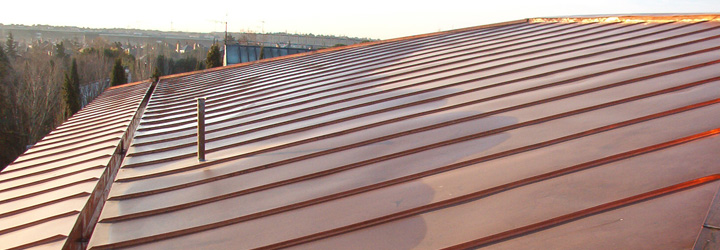
Detached house in Calle de la Ese, Pozuelo, Madrid, covered in natural copper. (caption) AppearanceIts colour and how it changes once it has been exposed is perhaps the most outstanding characteristic of this metal. 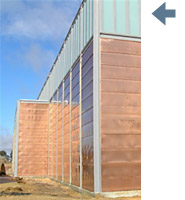
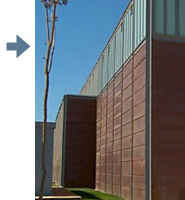
The raw salmon pink colour quickly changes to matt reddish brown tones, which darken progressively to a dark brown colour after a few months or years. This is the final colour of a copper facade. However, on a roof, there is a gradual change towards the green patina that is so characteristic of copper. Due to the Iberian Peninsula's diverse climate, this patina appears after different periods of time. In the north, it appears after 15 to 20 years and in the centre, the south, the east coast and all of Portugal, after 30 years, and in very dry areas (Murcia) even later and possibly never. Close to the coast, the patina will appear a few years earlier in each zone. If the copper is fitted in areas of the building protected from the rain, it does not develop a green patina. In Spain therefore, due to the combination of these long waiting times and the fact that copper is not a traditional material here, there are few examples of copper roofs that have got their green patina naturally. UpOther finishes
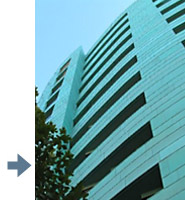
To 'skip' these waiting times, there are pre-aged brown and green copper finishes. Brown, pre-oxidised copper used by Quinta Metálica has a layer of oxide equivalent to approximately 3 to 5 years of exposure. Facades show the final colour but on a roof, this follows the evolution of natural copper by developing a green patina. The pre-patinated copper that we use has a layer of real patina on it, similar to what copper naturally develops after 15 years or more. This material gives the same green colour from day one over the whole surface of the work, regardless of its orientation or slope, on the facade and also inside. 
We also use tin-plated copper, consisting of pure copper covered with a fine layer of pure tin plating on both sides, giving a medium grey appearance with green shades. Finally, and particularly for facades, there are copper alloys that increase the range of colours even further. The most used alloys are bronze, brass and a new alloy called KME, made of copper and mainly zinc and aluminium, giving a very attractive dark gold colour after two or three years. It is important to be aware of how the colours evolve on these materials when selecting other materials and finishes / colours (stone, lacquered woodwork, etc.) for the work so we recommend that you contact us to request new samples or even better, request a visit from our technical consultant so you can be shown new samples and some that have been aged by exposure for these materials. For more information on the different finishes available in copper, please take a look at the other files on our metals. UpOther characteristics

Building in Plaza del Rey, Burgos with a pre-patinated copper facade. (caption) 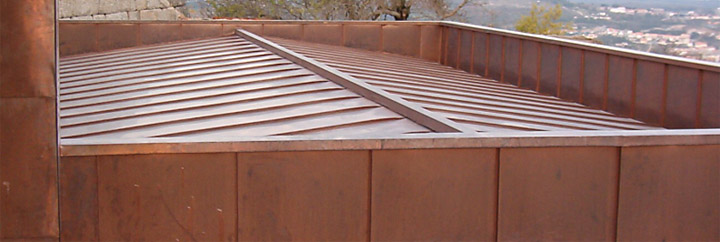
Detached house in Guarda, Portugal, covered in natural copper. (caption)
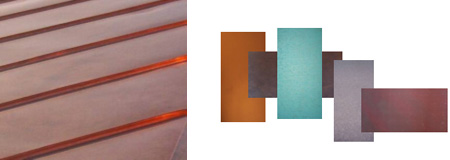
Request for information
For technical consultancy on your project, please contact Quinta Metálica and we will be happy to help you.
Up Documents
|
© Quinta Metálica · c. Juan Bautista Escudero 273· Córdoba· 14014 Córdoba
Tel.: 91 896 1898· arquitectura@quintametalica.com
Legal Advice
 Ficha Cobre (520.10 kB)
Ficha Cobre (520.10 kB)